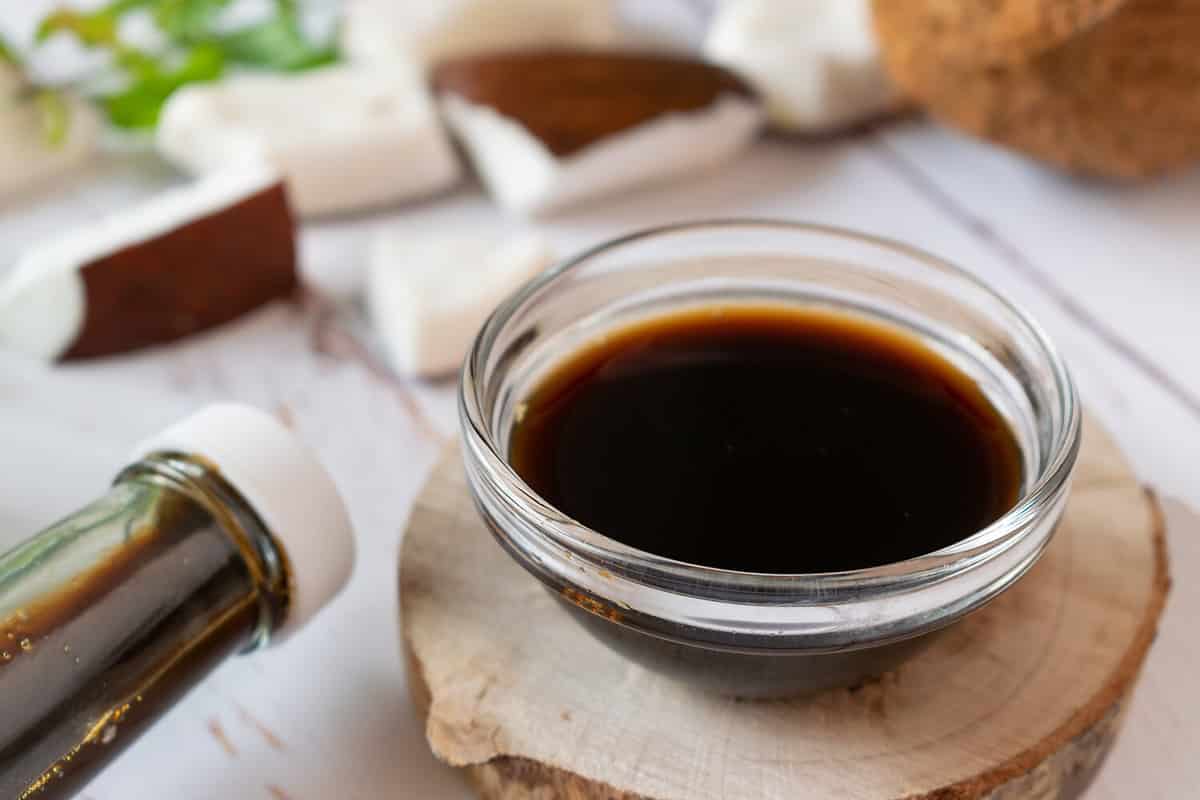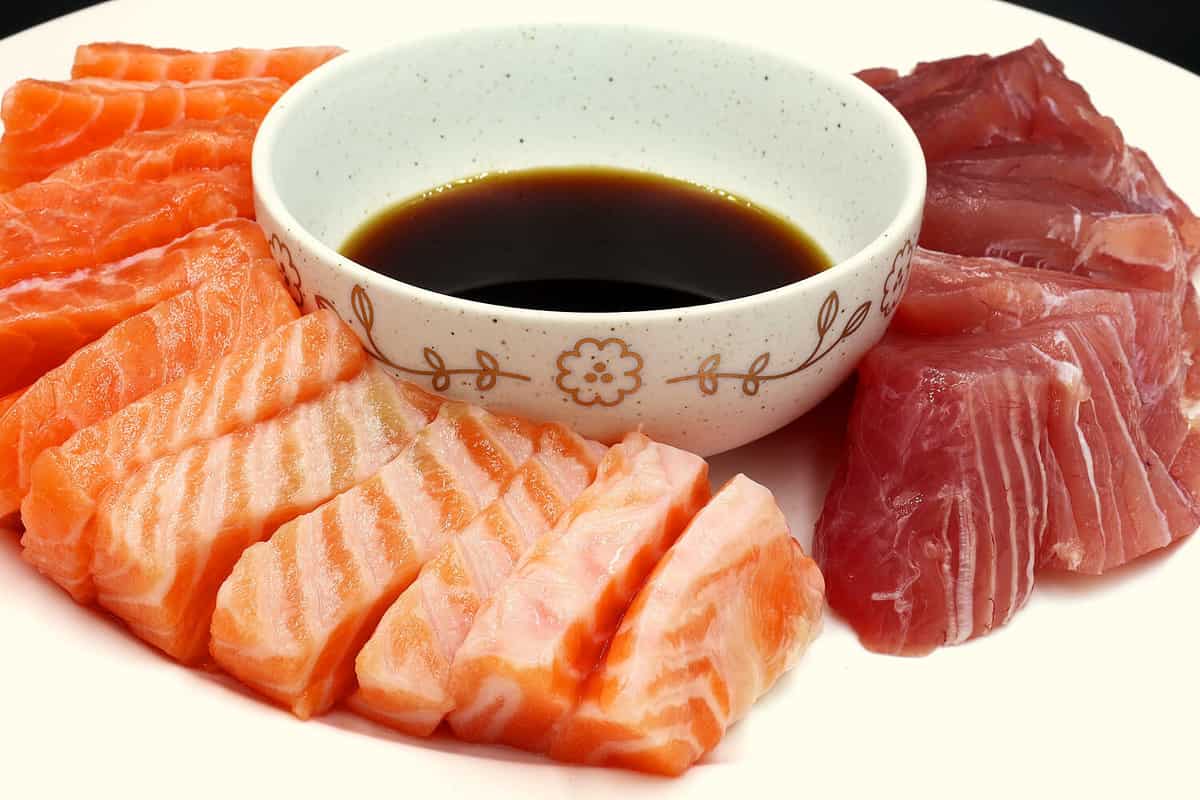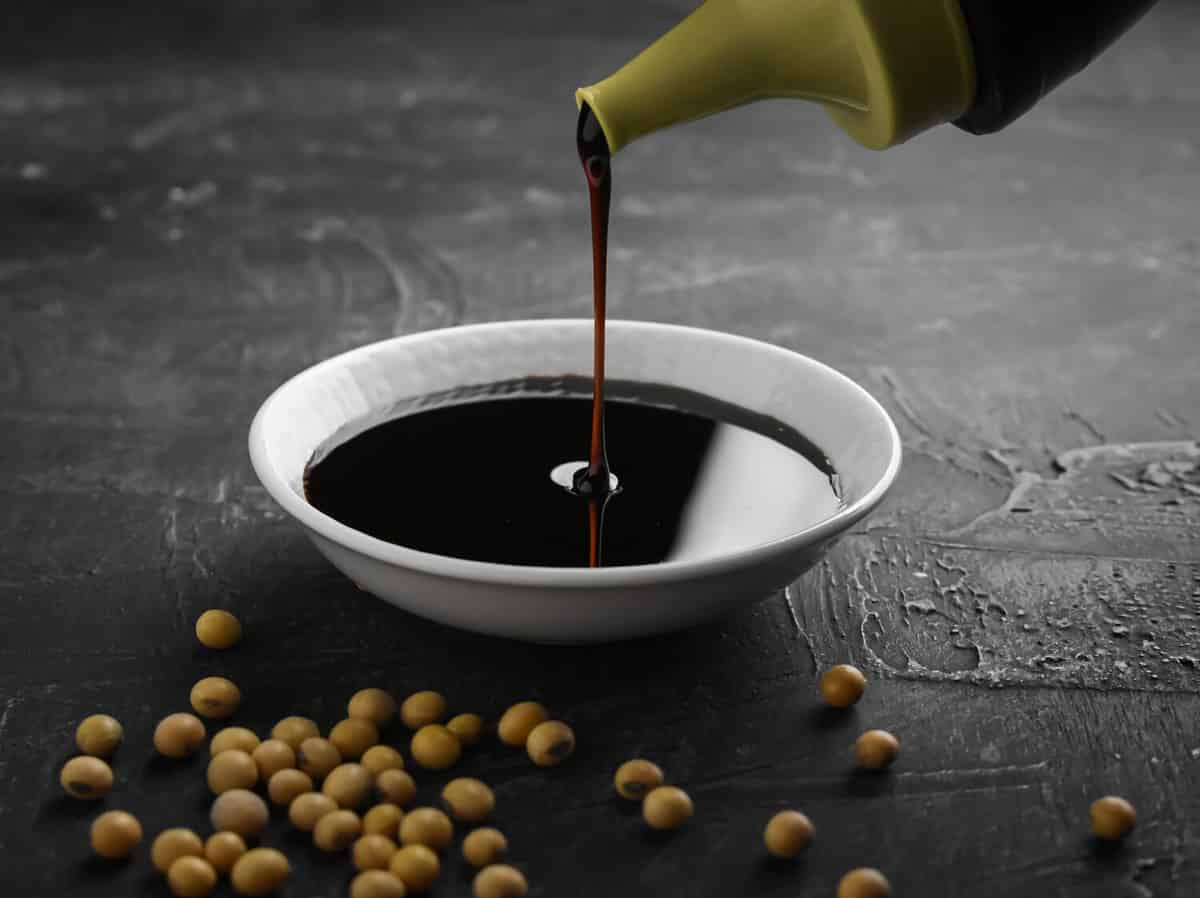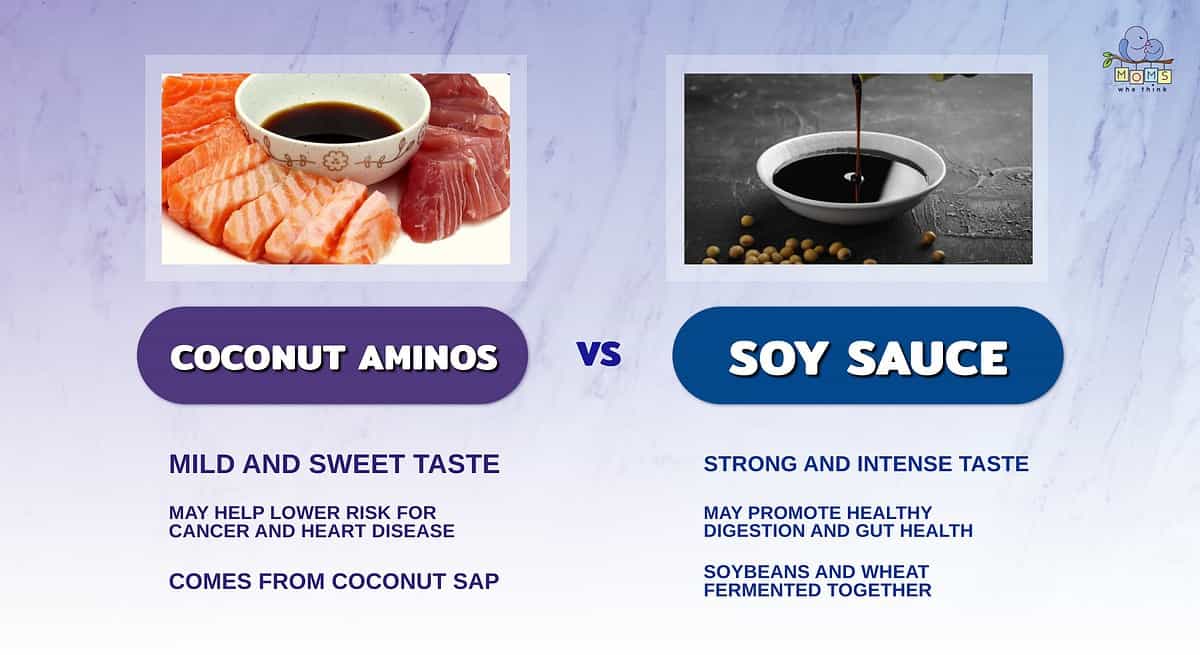

Coconut Aminos vs. Soy Sauce: 3 Differences & Which is Healthier
When it comes to Asian dishes, there are a variety of condiments to add for flavor and flare. Two of the more popular condiments are coconut aminos and soy sauce. This article will explore the difference between coconut aminos and soy sauce in depth. However, the main differences are flavor, salt content, and appearance.
Coconut Aminos vs. Soy Sauce:
These two condiments are similar in a few ways. For starters, they both have an umami flavor. If you have never heard of the term umami, it means the flavor is savory and deep. For comparison, other foods that have an umami flavor are:
- Tomatoes
- Green Peas
- Seaweed
- Onion
- Broccoli
- Mushrooms
- Tuna
- Sardine
- Cod
- Chicken eggs
- Beef
- Cheddar Cheese
- Squid
Also, both coconut aminos and soy sauce contain high levels of salt. One difference, though, is that coconut aminos do have less salt than soy sauce.
Flavor and Appearance
When it comes to flavor and appearance, there are a few differences between these two Asian condiments. First, coconut aminos are lighter in color than soy sauce. Secondly, while soy sauce has a strong and intense flavor, coconut amino is milder and sweeter.
Health Benefits of Coconut Aminos
Coconut aminos do carry some health benefits. Coconut aminos contain amino acids. However, what exactly are amino acids? Amino acids contain proteins and have many benefits, such as being an energy source, building muscle, and breaking down foods.
Coconut aminos are lower in salt than soy sauce. In addition, if you or your family member has a food allergy to any of the following: wheat, gluten, and soy, coconut aminos are free from these particular allergens, making them safe to eat.
Along with the benefits mentioned above, some evidence may link coconut aminos with the ability to lower the risk of certain conditions. These conditions include cancer and heart disease. Nevertheless, there need to be more studies done in these specific areas. It also may contain antioxidant, antibacterial, anti-inflammatory, and antifungal components.

©Micaela Fiorellini/Shutterstock.com
Health Benefits of Soy Sauce
Like coconut aminos, soy sauce also comes with nutritional benefits. These may include promoting digestion and gut health. Soy sauce may also have the ability to reduce allergies. Also, this condiment does carry protein and carbohydrates.
Soy sauce is high in salt, which can lead to consuming too much sodium. Taking in too much sodium is not good for your health. For example, high salt consumption can lead to higher blood pressure and increase the chances of heart disease.
Coconut Aminos vs. Soy Sauce: Nutritional Value
While coconut amnios and soy sauce both carry health benefits, it is important to look at the comparison between the two. Both condiments are also high in sodium, which can be a health risk factor. Soy sauce also can be high in MSG, a flavor enhancer.
Nutritional Profile of Soy Sauce
The nutritional profile of soy sauce varies from coconut aminos. WebMD states that the following will be present in 1 tablespoon of soy sauce:
| Calories | 8 |
| Cholesterol | 0 mg |
| Sodium | 879 mg |
| Carbohydrate | 1 g |
| Protein | 1 g |
Nutritional Profile Coconut Aminos
The nutritional profile of Coconut Aminos is slightly lower than soy sauce. It carries less sodium, though it's still not an overall small amount. In a tablespoon, coconut aminos will carry around the following:
| Calories | 35 |
| Cholesterol | 0 mg |
| Sodium | 590 mg |
| Carbohydrate | 9 grams |
| Protein | 0 grams |
It is important to remember the nutritional value of each condiment will vary depending on the specific brand and processing methods of each. However, the above charts can give you a rough estimate of what type of nutrition is in each one. As you can see, coconut aminos have less calories and sodium than soy sauce.
What is Coconut Aminos?
Coconut Aminos is a food flavoring that comes from coconut sap. Essentially, the sap of the coconut palm and sea salt have been mixed and fermented.
Coconut aminos are popular because they contain natural sugars and a savory flavor that is less intense than soy sauce. Additionally, coconut aminos are an excellent source of amino acids essential to our bodily functions.
Some downfalls of using coconut aminos are that it may cost more than soy sauce, and it's not necessarily easy to find in every grocery store like soy sauce. Also, it contains high levels of salt and few nutrients.
Regardless, coconut aminos is still popular because it is a bit sweeter, has less salt, and can directly replace soy sauce. It can also be used in cooking, as well as a dipping sauce and a marinade.
Popular Dishes that Use Coconut Aminos

©Joyce Mar/Shutterstock.com
What is Soy Sauce?
Soy sauce is popular around the globe and has been around for centuries; many believe it dates back to 3,000 years. It has become a staple in Asian cuisine and can be found worldwide.
Soy sauce is soybeans and wheat that have been fermented together. Many different processing methods make soy sauce, and the one that is used is typically dependent upon the location of the soy sauce.
Overall, the basic ingredients of soy sauce are:
- Wheat
- Soybeans
- Salt
- An agent such as mold or yeast
Soy sauce comes in a variety of colors and flavors. The most popular type is the Japanese soy sauce, which is dark, naturally fermented with wheat and soybeans. More soy sauce options include:
- Traditional soy sauce
- Chemical soy sauce
- Dark soy sauce
- Light soy sauce
- Tamari
- Shiro
- Saishikomi
Soy sauce has a very telling and very strong flavor. It is enjoyed in various Asian dishes, and many people love the intense, savory flavor that enhances the meal.
Popular Dishes That Use Soy Sauce

©vbertiany/Shutterstock.com
Can You Substitute Soy Sauce and Coconut Aminos?
It is possible to substitute soy sauce and coconut aminos. However, in doing so, it is important to note the differences in flavor and appearance. Coconut aminos are sweeter and lighter in appearance. While soy sauce is typically dark and has a sharp, intense flavor.
In Conclusion

- The different flavors of these sauces are important to keep in mind when choosing one for a dish.
- While coconut aminos and soy sauce purportedly have some health benefits, more research is needed. Always consult a medical professional when you have questions about nutrition and health.
- The main ingredients in soy sauce make it less suitable for those with certain food allergies.
Both soy sauce and coconut aminos are excellent condiments that elevate your dish. Although the differences may be subtle, they are enough to change the flavor and appearance of your dish. Whether you are in the mood for a sharp and intense flavor or a more subtle mild flavor, either can bring Asian-inspired dishes to life.
Now, back to our original question. Which one is healthier? Coconut aminos are healthier than soy sauce. They offer minimal nutrition and can be high in sodium. However, coconut aminos do have fewer calories and sodium and may be the healthier choice. Of the two, coconut aminos are also a great substitute for those with allergies and may have potential health benefits such as lowering your risk of heart disease. If you are looking for a healthier option, coconut aminos are your guy. However, which one you use for flavoring really comes down to personal preference!
Condiment Comparison Posts
- Rice Vinegar vs. Rice Wine: How They're Made and Most Common Uses
- Rice Vinegar vs. Rice Wine Vinegar: Similarities and Differences
- Sriracha vs Chili Garlic Sauce: 3 Important Differences Between 2 Sauces
- Canola Oil vs. Vegetable Oil
- Salsa Roja vs. Salsa Verde: The Colorful Difference Between Two Popular Salsas